Renault Kangoo van review 2023
All-new version of Renault’s small van, available in both petrol and diesel format
PROS
- Mixture of different variants
- Excellent level of safety kit
- Petrol and diesel engine options
- Smooth automatic gearbox available
- Car-like driving position
CONS
- Rivals offer higher payload
- Misses out on clever kit offered on LHD version
- Little flexibility in engine/gearbox combinations
- Standard safety kit poor
- Fuel economy only average
Summary
The Renault Kangoo might have launched with the electric Kangoo E-Tech version first but, for now at least, the majority of sales will be made up by versions containing a combustion engine.
Unlike many other commercial vehicles, you get a choice of both petrol and diesel engines in the Kangoo in the UK but expect diesel to be the more popular of the two.
The Kangoo has never really broken through in the UK, with small van rivals like the Citroen Berlingo, Peugeot Partner, Vauxhall Combo and the ever-popular Ford Transit Connect proving more popular in the sales charts.
However, all of those had had serious updates in the last few years so the Kangoo had some catching up to do and this all-new model is a big step forward versus the version that was on sale from 2008 to 2022.
What is new about the 2023 Renault Kangoo?
Visually the new Kangoo is a huge step forward from the previous one, with a neat front end that is enhanced by the C-shaped headlights and generous application of shiny bits on some versions.
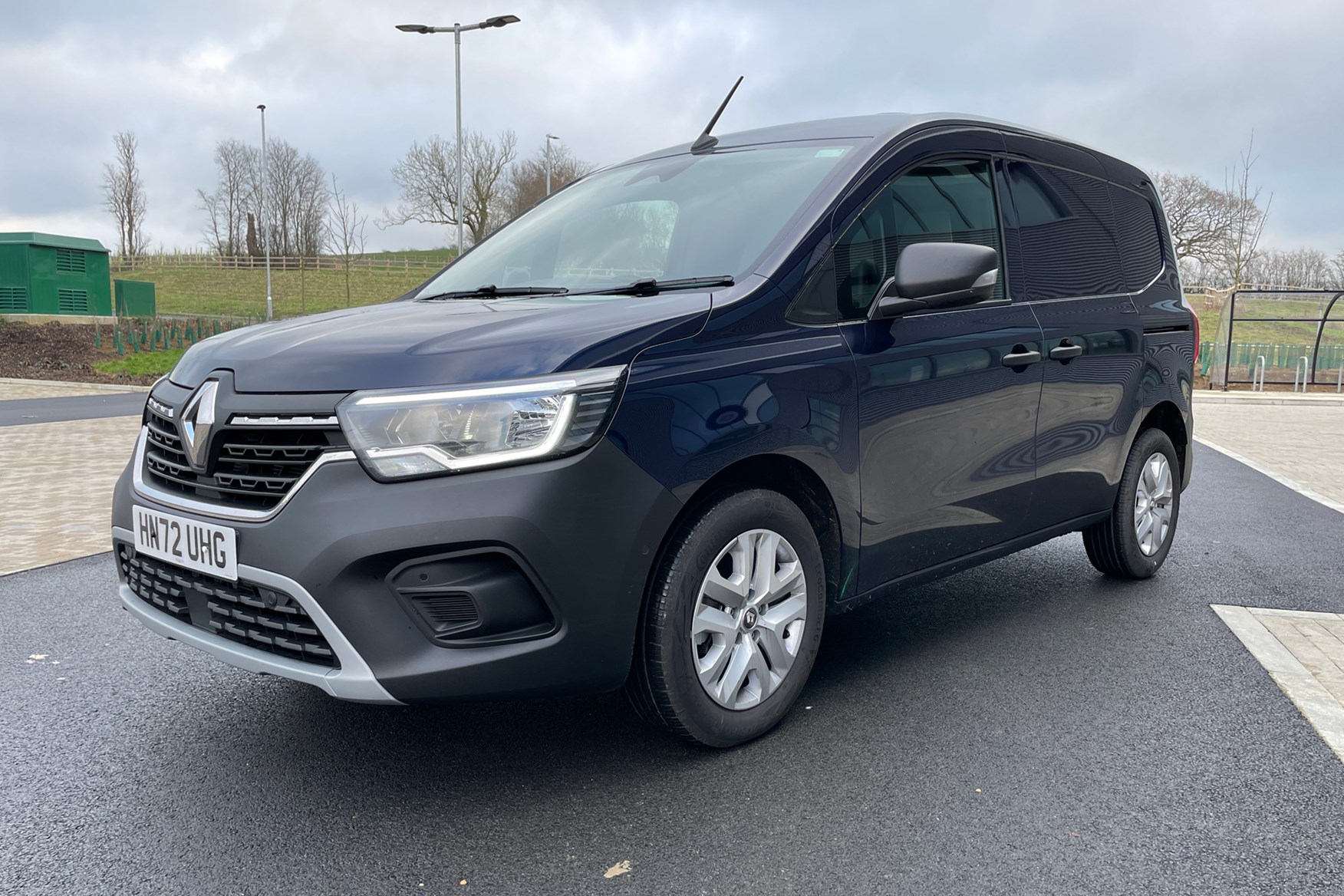
It gets a smart new cabin, too, with plenty of details that wouldn’t look out of place in some of Renault’s car range, although admittedly the lower end ones given the hard, durable nature of the plastics.
What there isn’t, sadly, is many of the clever features from the left-hand drive version of the Kangoo. That is available with a large glovebox, a system that removes the B-pillar to create a huge side loading space and a hinged bulkhead and a folding front passenger seat that gives you a large and long loadbay.
What we do get in the UK is an internal rack attached to the ceiling in the loading bay. Certainly clever, and arguably useful, but nowhere near as innovative as the features that LHD vans get that will set them apart from the competition. Without them, the Kangoo feels a lot more ordinary.
What engines does the 2023 Renault Kangoo come with?
There are three engines in the Kangoo line up as of early 2023, with a choice of two diesels and one petrol. Strictly speaking it is just the one diesel engine, but in a choice of two different power outputs. Both are 1.5-litre engines, with a choice of 95hp and 115hp. The former is offered with a six-speed manual gearbox while, unusually, the latter is only offered with a seven-speed automatic.
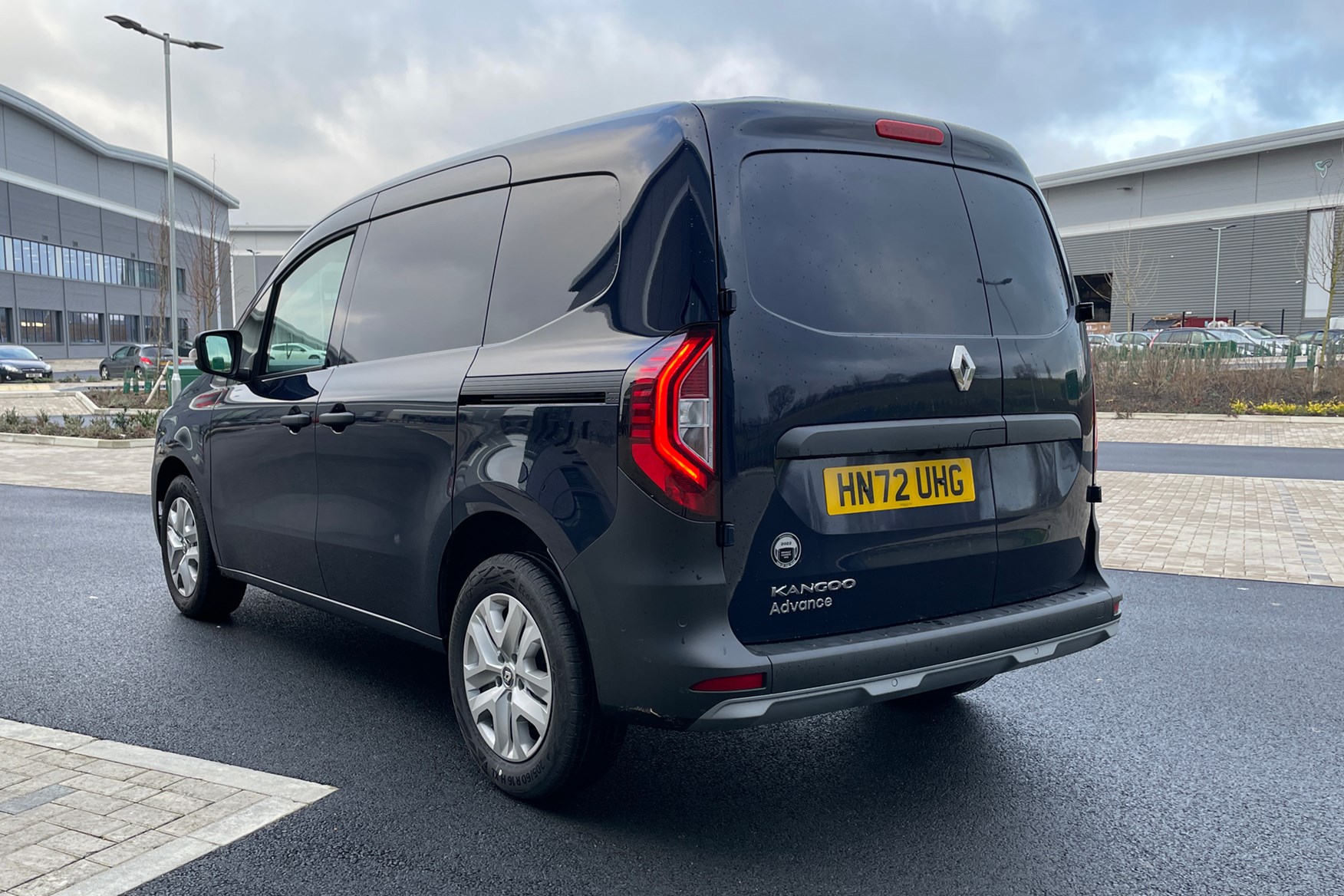
The option of a petrol engine is a rarity in the van sector as a whole. It is a 100hp 1.3-litre engine that is also paired with a six-speed manual gearbox.
Of course, the Kangoo also offers an all-electric version, and we deal with this separately in its own review.
What are the Renault Kangoo’s rivals?
The small van category is a hotly contested one and one that is much newer than many other sectors in the commercial vehicle industry. The biggest seller remains the Ford Transit Connect, but the Stellantis quintet are all strong options too.
This group includes the Citroen Berlingo, Fiat Doblo, Peugeot Partner, Toyota Proace City and Vauxhall Combo. All five of these are much of a muchness, but it is the Proace City that stands out over the rest on account of its 10-year warranty to the extent that it is our small van of the year.
The other big name in this class is the VW Caddy, which is a modern and strong small van, if one that doesn’t offer quite the same maximum payload as its rivals. All told, this is a highly competitive class.
Verdict: is the Renault Kangoo any good?
In short, yes, but being good is no longer enough on its own in this category given the strength of the opposition. It’s not as if buyers’ only other options are decades old and lacking in tech as they are in, say, the large van sector.
If it had some of the innovative storage systems that are offered in the left-hand-drive markets then we might well be looking at a new class leader as the rest of the fundamentals are equal to anything else. It drives excellently, has a wide range of engine choices, has a payload that is almost the match of the best in class and it has a fantastic electric version.
The ability to offer something genuinely different would have set it apart, but as it is it doesn’t feel as special as it could. Good, but not outstanding.
Skip to our full verdict on...
- Car-like to drive
- Each diesel only offered with one gearbox apiece
- Light and easy around town
Step behind the wheel of the Kangoo and you’ll find a very low, car-like driving position – much more akin to the latest Volkswagen Caddy Cargo than the taller Citroen Berlingo van.
We’ve driven both of the new Kangoo’s 1.5-litre ‘Blue dCi’ diesel engines, with both 95hp and 115hp power outputs. The former is paired to a slightly stiff six-speed manual gearbox and it’s a perfectly acceptable combination. It’s a very refined engine, if a little breathless.
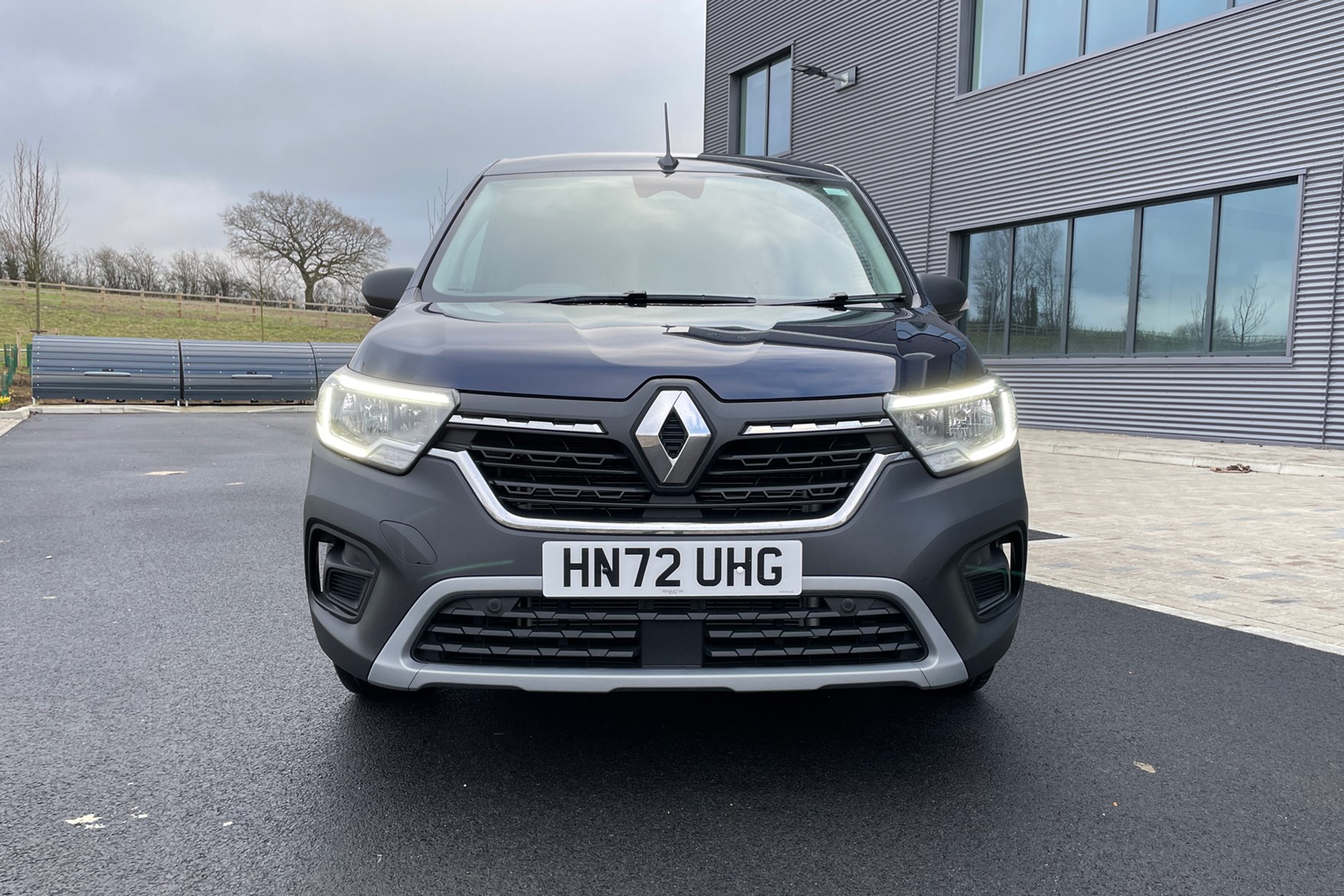
The more powerful engine removes this element of breathlessness but without going too far towards being overpowered. It also greatly benefits from being available with a smooth seven-speed gearbox. It’s unusual that there is no option to spec the more powerful engine with the manual gearbox, but it is not as if there is a huge price differential between the two – no more than you could pay to step up the engine range ordinarily.
The Kangoo’s steering is light and accurate and visibility good. The leading edge of the bonnet is tricky to see, just as it is in anything else in the class, but rear visibility is enhanced by the rear-view camera on the Advance trim, which comes with a clear view that makes positioning the van backwards easy.
Having tried the diesel with a full bulkhead it is much more relaxed and refined than the equivalent versions we tried with grated dividers. There is still a degree of wind and road noise, as is normal for any small van, but it is greatly reduced with a solid barrier between the cab and the loading bay.
- Smart and modern cabin
- No major clever features
- Identical to electric version
The Renault Kangoo’s cabin has gone the way that every small van has of late, by taking big influence from the passenger car world. Granted it is more in line with the sort of budget models that appear on smaller superminis than the high-end larger equivalents.
There is a decent level of adjustment for drivers, with a seat that moves enough for anyone up to six-foot to be able to get into a decent seating position, although those much taller might find it doesn’t go back as far as they would like.
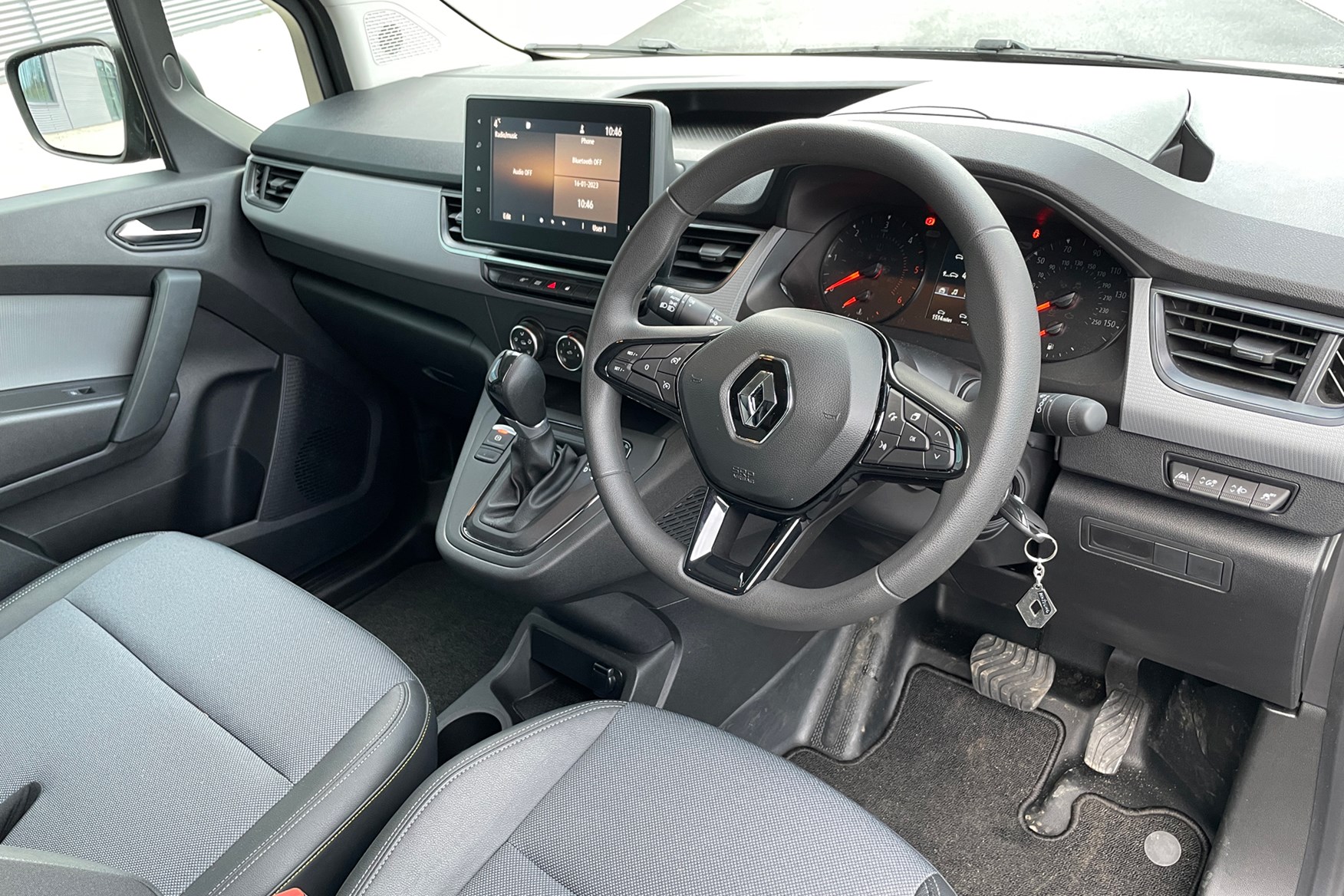
The rest of the layout is ergonomically sound, too. The high-set gear lever is easily reached and keeps space free lower down, while there are several welcome physical buttons dotted around the central console to control the major functions such as heating and the driving mode. Being able to twirl the former of these is particularly welcome if you are wearing gloves. There is no volume dial, but you can control such things via a dedicated console behind the steering wheel.
Storage up front
Storage is ok rather than great in the cabin, with an open space above the centre of the dash and a lidded one above the steering wheel – the latter welcome as it prevents things from reflecting into your line of sight.
The storage on the whole is relatively modest, with a decent-sized pair of door bins and the aforementioned dash-top spaces. There is also a small overhead space and a little slot down below the gear lever.
There’s also a small spot above the lever, which is about the right size for a phone. This means you can plug it in and not have wires trailing across the cabin, although you can also pop it out of sight in the box above the steering wheel.
- Cheap entry price
- Only three years warranty as standard
- Fuel economy competitive but not class leading
Renault is bucking a bit of a trend by still offering a basic version that doesn’t have anywhere near as many frills but offers a lower entry price. The Start model does without a lot of the features that are standard on some rivals but manages to bring the cheapest Kangoo down to a starting price of less than £19,000. This is notably lower than all the major rivals in its class.
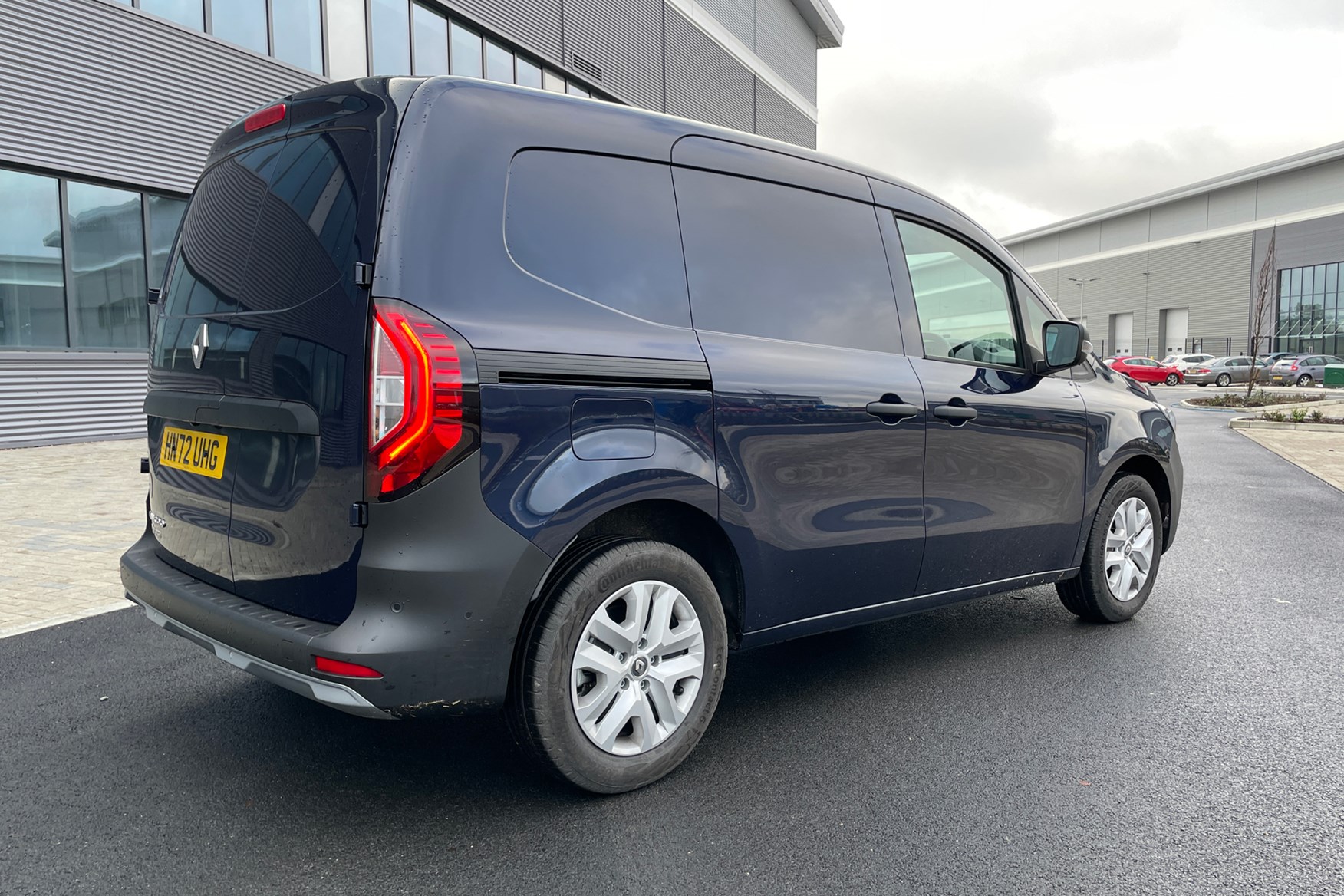
That said, it is similarly priced when you compare like for like, as this lower price point is due partly to the lower level of kit and also in part to the fact that the Kangoo is one of the few vans to come with a petrol engine.
Renault Kangoo mpg
Fuel economy for the diesel engines in the Kangoo range are very similar, with the more powerful version only a couple of mpg behind the 95hp model. The 95hp is the most efficient version in the range, with an official combined economy of 53.3mpg, while the 115hp is not far behind with an official figure of 50.4mpg.
The petrol is less economical on paper, with an official rating of 41.5mpg.
Renault Kangoo servicing
Servicing is well spaced for all three versions, with intervals set at 24,000 miles or every two years regardless of whether you go for a petrol or a diesel. Renault will sell you a service plan when you buy the Kangoo brand new, which covers you for the first five years or 66,000 miles. As a guide to how much more servicing a petrol or a diesel will cost you versus electric, this is about 50% more expensive on an engined Kangoo versus an EV model.
Renault Kangoo warranty
Renault’s standard warranties are comparatively poor compared to the rest of the industry, with only three years and 100,000-miles of cover included.
You can opt for the extended warranty cover, but this only takes you up to five years and doesn’t add any more miles to the allowance. This is still some way short of the maximum 10 years’ cover you get from Toyota on the Proace City.
Renault Kangoo standard equipment
There are just the two trims in the Renault Kangoo range. The more basic looking Start and the more generously fitted out Advance. Equipment highlights are below.
Start includes:
- DAB digital radio and Bluetooth, USB and AUX inputs with monochrome display
- Auto lights and wipers
- Single passenger seat
- Manual air conditioning
- Electric front windows
- Full bulkhead
- 10 lashing points in the rear
- 16-inch steel wheels
- Heated and powered door mirrors
- Twin sliding side doors
- Unglazed side-hinged rear doors
- Roof bar fixings
- Cruise control and speed limiter
Advance equipment includes (in addition to Start):
- Eight-inch colour touchscreen with Apple Carplay and Android Auto
- Electronic parking brake
- Passenger bench seat
- LED lighting in the loading bay
- Chrome details on gear lever and dash
- Rear parking sensors
- 16-inch wheel trims
- Wide view mirror
This is a brand-new van, which makes it tricky to fully assess how reliable it will be. Renault has always enjoyed a middling result as a manufacturer in the FN50 reliability ratings, but previous Kangoo was never much of a feature in the top 20 scorers.
- Not yet tested as a van
- Car version scores four stars
- Basic standard safety kit
The Renault Kangoo takes a sadly all-too-familiar approach to safety equipment, with only a fairly basic offering as standard. Every van gets the following as standard:
- Driver’s airbag
- Emergency call system
- Driver and passenger seatbelt reminder
- Hill start assist
- Deadlocking
Advance then adds an alarm but nothing much else. If you want more then you need to head to the options list and choose one of the two packs on offer there. The Advanced Driver Assist Pack 1 costs £1,250 before VAT and includes Active Emergency Braking, traffic sign recognition and over speed prevention, blind spot warning, lane keep assist, adaptive cruise control and driver attention alert.
The Advanced Driver Assist gets the same but minus the adaptive cruise and attention alert systems and costs £750 not including VAT.
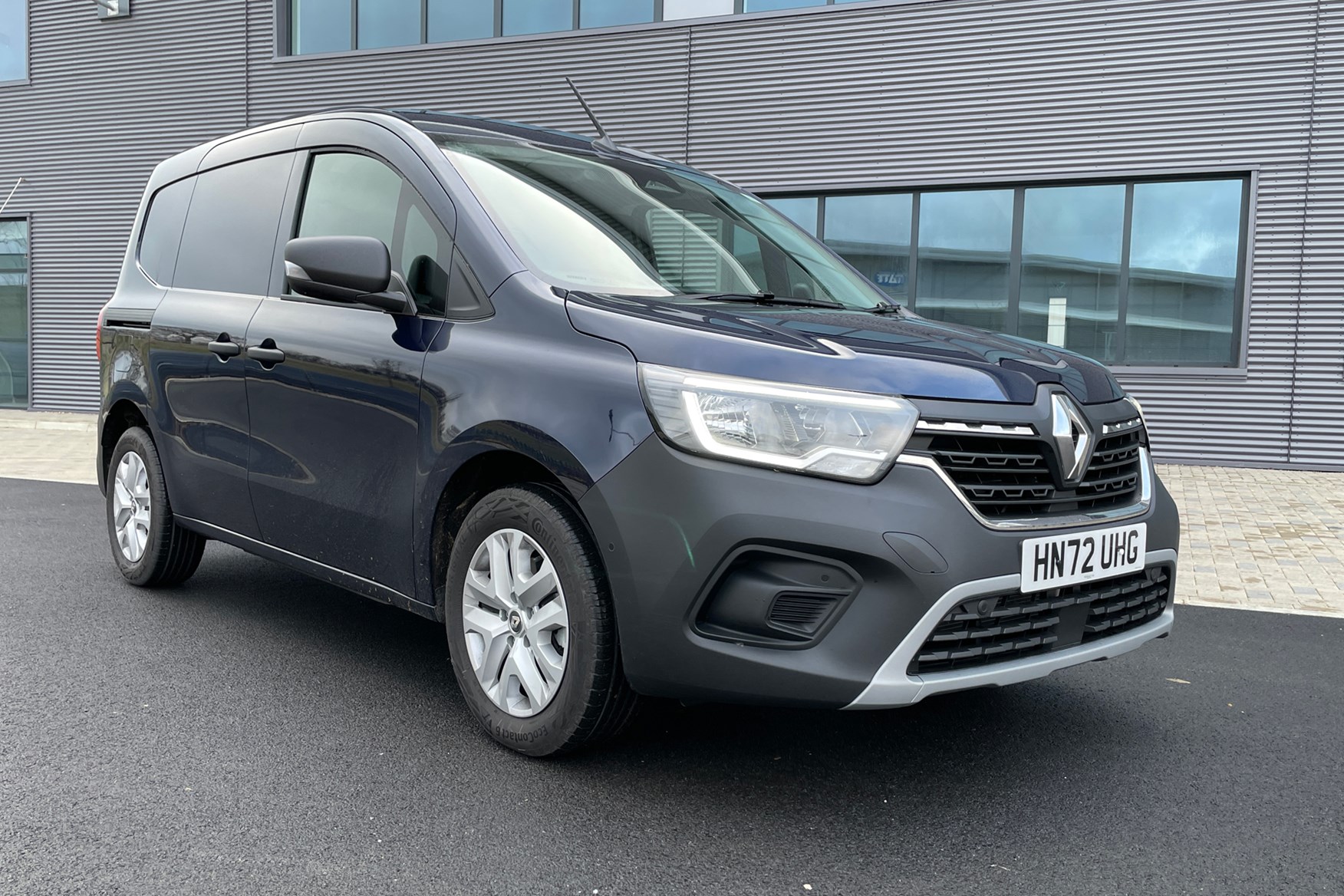
You can add all these elements individually, while you are also able to include extra airbags – either a full set or just a passenger ‘bag. As we say so often, though, it is a shame that the latter is not included as standard on even the top trim.
Which Renault Kangoo is best for me?
There is only really one reason to go for the most basic version of the Kangoo – price. It’s notably cheaper than pretty much all of the other small-van contenders, so it has a real selling point on that front.
The difference between that and the better equipped Advance model is notable, though, and that would be our choice. The long-wheelbase, rarely, is the one that has the better payload too, with almost a tonne available. The greater space and strength would sway it for us.









